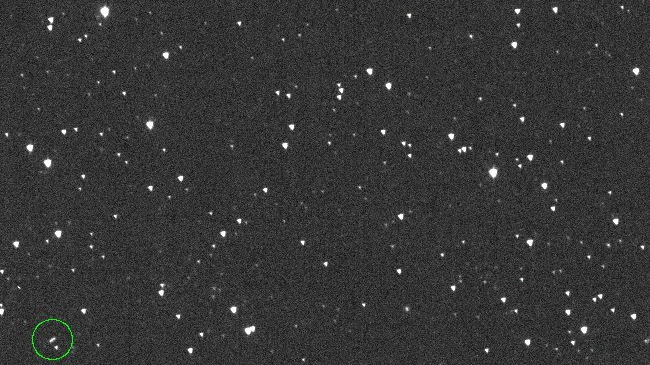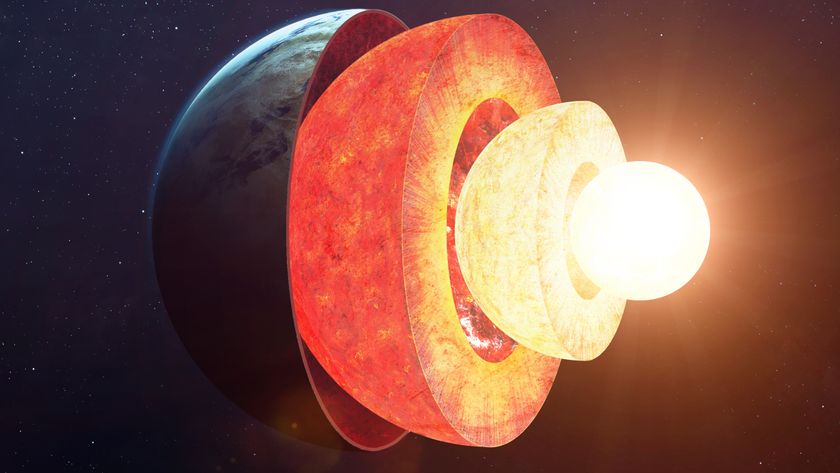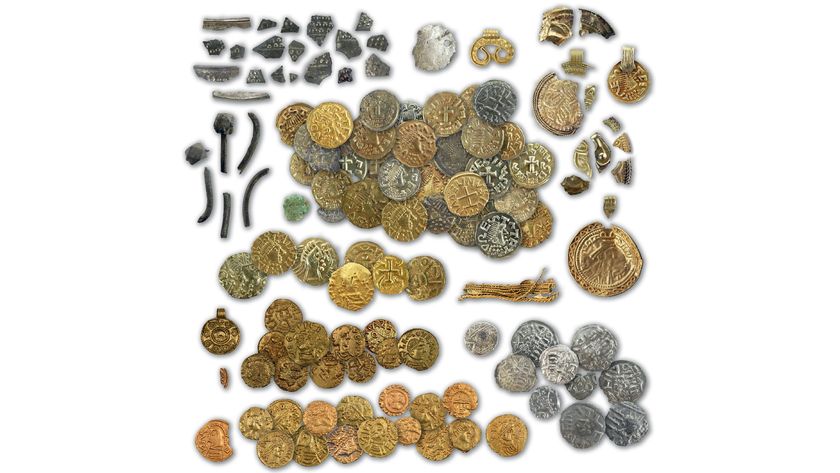Tsunami Hits Japan After Massive 8.9 Earthquake
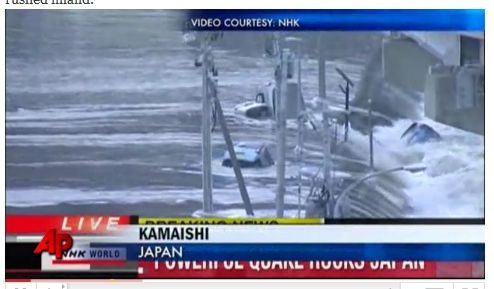
Update 5:00 p.m. EST:
Much of the harbor in Crescent City, California, has been destroyed, and one person is feared dead, according to the Los Angeles Times. In Chile, officials have upgraded a tsunami warning to an alert and ordered coastal residents to evacuate, CNN Chile reported.
Related Coverage
- Earthquake Forces Closure of Japan's Space Station Control Center
- FAQ: What’s the Science Behind Japan’s Quake and Tsunami?
- Incredibly, 20 Quakes of Magnitude 6.0 or Greater Rock Japan
- An Earthquake's Global Reach
- Record of Japanese Earthquake Made in England
- Why Japan's Tsunami Triggered Enormous Whirlpool
- Earthquakes Put Japan's Nuclear Reactors on Red Alert
- Businesses in Hawaii, California Cope With Tsunami Warning, Impact
- The Science Behind Japan's Deadly Earthquake
- Tsunami Warnings: How to Prepare
- Japan's Tsunami: How It Happened
- History's Biggest Tsunamis
- When Tsunami Warning System Works, And When It Doesn't
- Image of the Day: Traveling Tsunami
Update 3:05 p.m. EST:
The U.S. National Oceanic and Atmospheric Administration released a video showing how the tsunami has spread. Crescent City, California, has been hit hard, with reports of waves up to 6 feet (1.8 meters) tall.
Update 2:42 p.m. EST:
A magnitude 6.2 earthquake has struck off the west coast of Honshu, but it's not clear yet if it's related to the 8.9 magnitude quake. There have been about 100 aftershocks of magnitude 5 or greater since the mainshock, according to the USGS. At a press conference, scientists said the entire island of Honshu moved eastward by 8 feet (2.3 m).
Sign up for the Live Science daily newsletter now
Get the world’s most fascinating discoveries delivered straight to your inbox.
Update 1:10 p.m. EST:
In Hawaii, the Pacific Tsunami Warning Center hase lifted the evacuation order. Waves have reached northern California, with heights of 2.5 feet (0.7 meters) at Point Arena, 1.6 feet (0.5 m) at San Francisco and 2.4 feet (0.7 m) at Monterey.
Update 11:55 a.m. EST:
In Hawaii, the Pacific Tsunami Warning Center is reporting waves of 4.6 feet (1.5 meters) in Hilo, Big Island, 5.7 feet (1.7 m) in Kahului, Maui, and 2.3 feet (0.7 m) in Honolulu. Australia, Mexico, Central and South America are also under a tsunami warning
Update 11:30 a.m. EST:
The latest death toll is now at 137, with 531 reported missing, according to the Kyodo News Agency, citing police. Additionally, 200 to 300 bodies have been found in coastal Sendai, CNN reported. In the United States, tsunami waves are being reported near the California-Oregon border, in Port Orford, Oregon, and Crescent City, California.
Update 10:40 a.m. EST:
Japan's Kyodo News Service, citing Japan's defense forces, said 60,000 to 70,000 people were being evacuated to shelters in the Sendai area. In Hawaii, waves up to 7 feet (2 meters) high hit near Maui. The waves are rolling in every 15 minutes. No major damage has been reported in the two hours since the first waves hit.
Below is our original news story, which remains as originally posted:
Editor's Note: This story was updated at 9:25 a.m. EST.
An 8.9-magnitude earthquake struck northern Japan today (March 11), triggering tsunamis across the area that reportedly swept cars, buildings and other debris well inland.
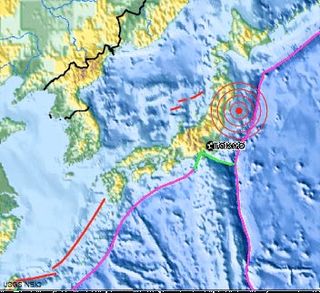
The epicenter of the earthquake was 231 miles (373 kilometers) northeast of Tokyo and 80 miles (130 km) east of Sendai, Honshu, according to the U.S. Geological Survey.
A tsunami is a series of waves where the first one may not be the largest; wave heights can't be predicted and can change as the water hits the coast, according to the USGS.
The March 11 earthquake was preceded by a series of large foreshocks over the last two days — the first of which was a 7.2-magnitude quake on March 9 about 25 miles (40 km) from the March 11 earthquake. Today's temblor occurred as a result of thrust-faulting on or near the subduction zone, where Earth's Pacific plate thrusts underneath Japan at the Japan Trench.
The Japan Meteorological Society has forecast more major tsunamis in the area, with some expected to reach more than 30 feet (10 m) off the coast of Hokkaido, Japan's second largest island. A tsunami was also generated off the coast of Hawaii, one that could cause damage along the coastlines of all islands in the state of Hawaii, according to the Pacific Tsunami Warning Center. Tsunami warnings are in effect across Hawaii as well.
A Tsunami Warning is also in effect for:
- Coastal areas of California and Oregon from Point Concepcion, Calif., to the Oregon-Washington border.
- Coastal areas of Alaska from Amchitka Pass, Alaska (125 miles west of Adak) to Attu, Alaska.
(A Tsunami Warning is the highest tsunami alert and means a tsunami is imminent. All coastal residents in the warning area who are near the beach or in low-lying regions should move immediately inland to higher ground and away from all harbors and inlets including those sheltered directly from the sea.)
A Tsunami Advisory is in effect for:
- Coastal areas of California from the California-Mexico border to Point Concepcion, Calif.
- Coastal areas of Washington, British Columbia and Alaska from the Oregon-Washington border to Amchitka Pass, Alaska.
(A Tsunami Advisory is the third highest tsunami alert and means that a tsunami capable of producing strong currents or waves dangerous to people near water is expected.)
As for why some earthquakes trigger tsunamis and others don't, scientists say several factors come into play, including the strength of the quake (below 7.5- or 7.0-magnitude quakes don't typically cause tsnamis), the direction of the temblor's motion and the topography of the seafloor, according to the USGS.
Jeanna Bryner is managing editor of Scientific American. Previously she was editor in chief of Live Science and, prior to that, an editor at Scholastic's Science World magazine. Bryner has an English degree from Salisbury University, a master's degree in biogeochemistry and environmental sciences from the University of Maryland and a graduate science journalism degree from New York University. She has worked as a biologist in Florida, where she monitored wetlands and did field surveys for endangered species, including the gorgeous Florida Scrub Jay. She also received an ocean sciences journalism fellowship from the Woods Hole Oceanographic Institution. She is a firm believer that science is for everyone and that just about everything can be viewed through the lens of science.
